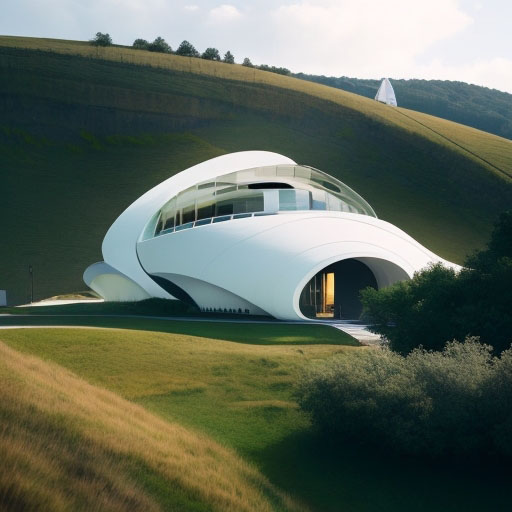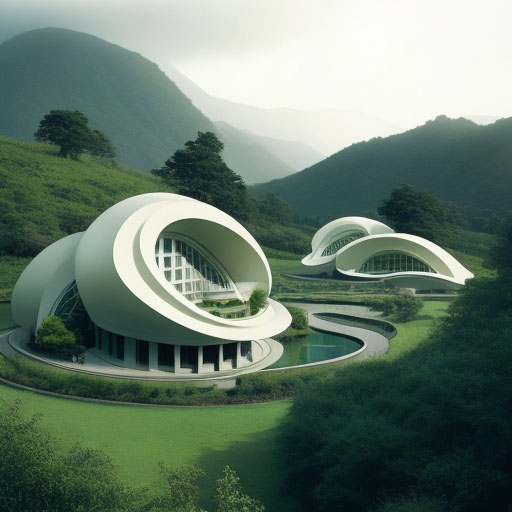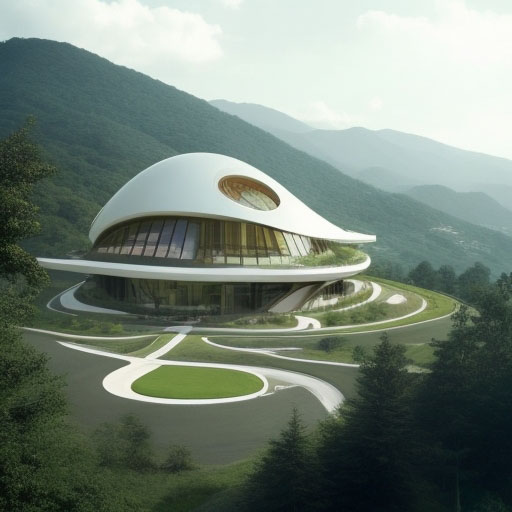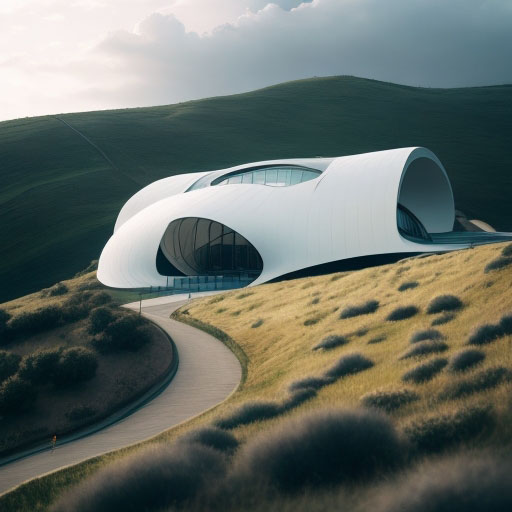Architecture art with AI refers to the integration of artificial intelligence (AI) in the field of architecture to enhance and influence various aspects of architectural design and practice. AI can have a significant impact on architecture in the following ways:



- Generative Design: AI can generate architectural designs based on various criteria, such as site conditions, environmental factors, user preferences, and budget constraints. This can lead to innovative and optimized architectural solutions.
- Site Analysis: AI can assist architects in analyzing site data, including topography, climate, and local regulations. It helps in making informed decisions about building placement, orientation, and sustainability.
- Energy Efficiency: AI can optimize building designs for energy efficiency by modeling and simulating the performance of different design options, helping architects reduce energy consumption and operational costs.
- Parametric Design: AI can facilitate parametric design by creating and manipulating complex forms and structures that respond dynamically to changing parameters.
- Material Selection: AI can suggest suitable materials for a given project based on factors like durability, cost, sustainability, and aesthetic preferences.
- Virtual Reality (VR) and Augmented Reality (AR) in Architecture: AI can be used to create immersive VR and AR experiences, allowing architects and clients to visualize and interact with architectural designs in a three-dimensional virtual space.
- Digital Twin Technology: AI-powered digital twins create real-time digital replicas of physical buildings. These models can help with maintenance, monitoring, and performance analysis.
- Design Exploration: AI can quickly generate numerous design iterations, allowing architects to explore multiple possibilities and make data-informed decisions.
- Historical and Cultural Analysis: AI can analyze architectural styles and historical contexts, assisting architects in designing buildings that are culturally and historically sensitive.
- Accessibility and Universal Design: AI can help architects design spaces that are accessible to individuals with disabilities by simulating user experiences and suggesting design improvements.
- Urban Planning and Smart Cities: AI can analyze urban data to optimize city planning, transportation, and infrastructure design, contributing to the development of smart and sustainable cities.
- 3D Printing and Construction: AI can assist in 3D printing and robotic construction processes, enabling the creation of complex architectural elements and structures.
- BIM (Building Information Modeling): AI can enhance BIM systems by automating data entry, clash detection, and performance analysis, making project management and collaboration more efficient.
- Code Compliance: AI can help architects ensure that their designs meet local building codes and regulations, reducing the risk of project delays and revisions.
- Natural Light and Ventilation Optimization: AI can analyze building designs to optimize natural light and ventilation, creating healthier and more comfortable living and working spaces.



The integration of AI in architecture not only streamlines the design process but also promotes sustainable and user-centered design. It enhances architects’ ability to create innovative, efficient, and aesthetically pleasing structures while addressing complex urban and environmental challenges. AI also supports collaboration and decision-making in the architectural field by providing data-driven insights and simulations.
You can learn more Architecture art Prompts Here
Link :>

